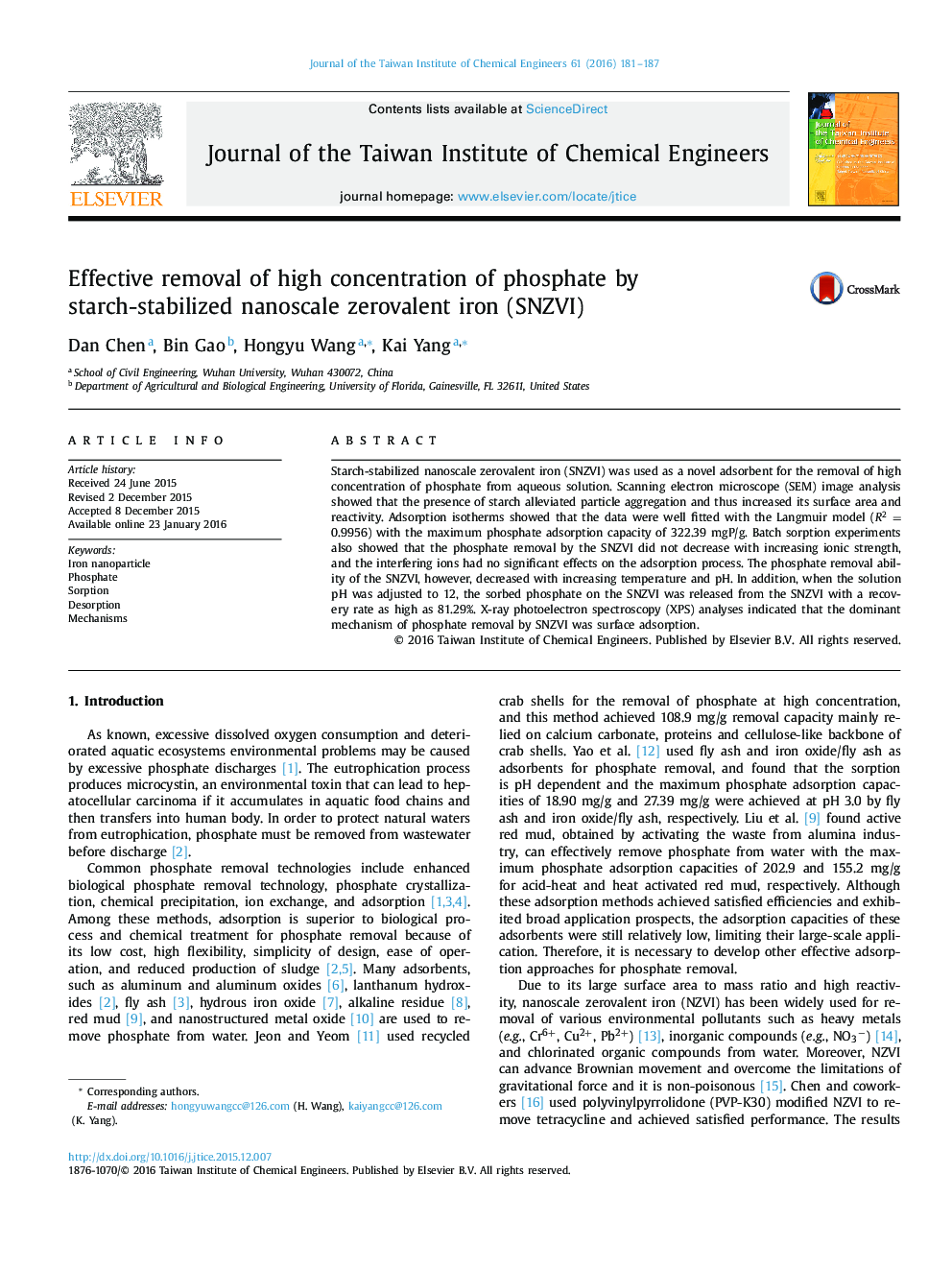| Article ID | Journal | Published Year | Pages | File Type |
|---|---|---|---|---|
| 690357 | Journal of the Taiwan Institute of Chemical Engineers | 2016 | 7 Pages |
•Starch stabilized NZVI particles to increase surface area and reactivity.•SNZVI showed excellent sorption ability to phosphate.•Ionic and interfering ions had no significant effects on phosphate adsorption.•Phosphate adsorption decrease with increasing temperature and ph.
Starch-stabilized nanoscale zerovalent iron (SNZVI) was used as a novel adsorbent for the removal of high concentration of phosphate from aqueous solution. Scanning electron microscope (SEM) image analysis showed that the presence of starch alleviated particle aggregation and thus increased its surface area and reactivity. Adsorption isotherms showed that the data were well fitted with the Langmuir model (R2 = 0.9956) with the maximum phosphate adsorption capacity of 322.39 mgP/g. Batch sorption experiments also showed that the phosphate removal by the SNZVI did not decrease with increasing ionic strength, and the interfering ions had no significant effects on the adsorption process. The phosphate removal ability of the SNZVI, however, decreased with increasing temperature and pH. In addition, when the solution pH was adjusted to 12, the sorbed phosphate on the SNZVI was released from the SNZVI with a recovery rate as high as 81.29%. X-ray photoelectron spectroscopy (XPS) analyses indicated that the dominant mechanism of phosphate removal by SNZVI was surface adsorption.
Graphical abstractFigure optionsDownload full-size imageDownload as PowerPoint slide
